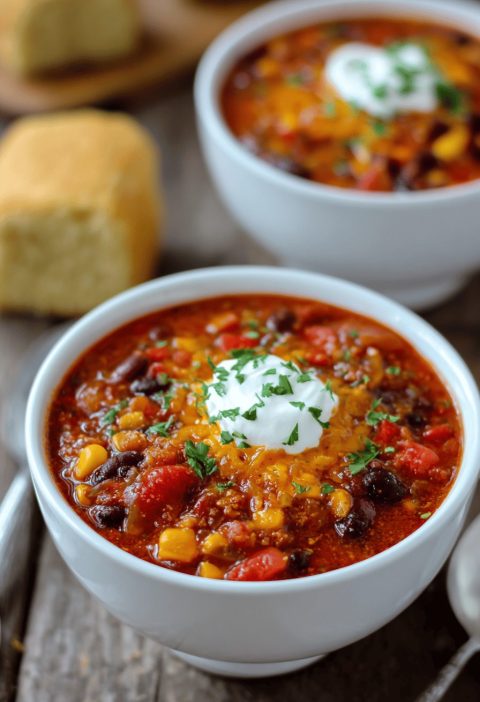Would you like to save this?
Unclogging a toilet can be one of the more daunting household chores. The very thought of dealing with a clogged toilet brings up images of plungers, harsh chemicals, and sometimes even calling in a professional plumber. But what if I told you there’s a simple, surprisingly effective trick that you can do yourself, using something you probably already have in your kitchen? Dishwashing liquid, the unsung hero of many cleaning tasks, turns out to be a powerful ally in tackling toilet clogs.
A Personal Anecdote
I still remember the day when I first encountered this trick. It was a Saturday morning, and the toilet in our guest bathroom decided to stage a revolt. As someone who isn’t particularly fond of handling plumbing issues, I was dreading the thought of a messy and potentially expensive solution. In a moment of desperation, I turned to the internet for advice. Amidst a sea of complicated methods, one simple tip caught my eye: dish soap. Skeptical but hopeful, I decided to give it a try. To my surprise, not only did it work, but it also became my go-to method for future clogs. It was an eye-opener, turning a dreaded chore into a manageable task.
Ingredients and Tools
Dishwashing liquid (preferably a gentle, biodegradable type)
Hot water (not boiling, but as hot as you can get from the tap)
Baking soda (optional, for added effectiveness)
White vinegar (optional, for a natural boost)
Coarse salt (optional, for maintenance cleaning)
Wire hanger (for a DIY drain snake, if needed)
Bleach (optional, for severe clogs)
Aluminum foil or plastic wrap (for creating a vacuum effect, if needed)
Step-by-Step Instructions
1. Assess the Situation
Before you start, it’s essential to gauge the severity of the clog. If the toilet is only slightly clogged (e.g., the water rises but doesn’t overflow), dish soap alone might be sufficient. However, for more severe blockages, you might need to use additional methods.
2. Add Dishwashing Liquid
Pour Dish Soap:
Take about half a cup of dishwashing liquid and pour it directly into the toilet bowl. The soap should be poured around the edges of the bowl to ensure it reaches the entire surface of the blockage.
Let It Sit: Allow the dish soap to sit in the bowl for about 10 minutes. The soap’s slippery texture helps to lubricate and break down the debris causing the clog.
3. Add Hot Water
Prepare Hot Water:
Boil a kettle of water or heat it up in the microwave until it is hot but not boiling. Boiling water can damage the toilet’s ceramic or plumbing.
Pour Hot Water: Carefully pour about 1 liter (approximately 4 cups) of hot water into the toilet bowl. The heat helps to further dissolve and flush the debris that the dish soap has loosened.
Wait: Let the hot water and soap mixture sit for an additional 25 minutes. This waiting period allows the solution to penetrate and break down the blockage more effectively.
4. Flush the Toilet
Flush:
After the waiting period, try flushing the toilet. The combination of dish soap, hot water, and time should ideally clear the clog. If the toilet flushes normally, you’re done!
5. Repeat if Necessary
Check for Persistent Clogs:
If the toilet remains clogged, it may indicate a more severe blockage. In this case, you can repeat the process of adding dish soap and hot water.
Add Baking Soda and Vinegar: For stubborn clogs, consider adding half a bag of baking soda and a glass of vinegar to the bowl before adding hot water. The fizzing action of baking soda and vinegar can help dislodge the blockage.
Alternative Solutions for Persistent Clogs
If the dish soap method doesn’t fully resolve the clog, there are several other techniques you can use:
1. Baking Soda and Vinegar
Mix Ingredients:
In the toilet bowl, combine half a bag of baking soda with a glass of white vinegar. The mixture will fizz and bubble, helping to break down the clog.
Add Hot Water: Once the reaction subsides, pour hot water into the bowl. Let it sit for 20-30 minutes, then flush. This natural method is effective for both minor and moderate clogs.
2. Using Salt
Add Coarse Salt:
Pour about 100 grams of coarse salt into the toilet bowl.
Let It Sit: Allow the salt to sit for about three hours. Salt acts as a cleaning agent and can help to dissolve and loosen any buildup.
Flush: After the sitting period, flush the toilet to clear away the salt and debris.
3. DIY Drain Snake with a Wire Hanger
Prepare the Hanger:
Unravel a wire clothes hanger to create a makeshift drain snake. Straighten the wire but leave a small hook at the end.
Insert and Loosen: Carefully insert the hook end into the toilet drain. Gently maneuver it to loosen the clog. Be cautious not to scratch the toilet bowl.
Remove the Blockage: Once you feel resistance decrease, remove the hanger and flush the toilet to clear the loosened debris.
4. Bleach, Vinegar, or Club Soda
Bleach:
Pour 2-3 cups of bleach into the toilet bowl. Let it sit for 10-15 minutes before flushing. This method is effective for breaking down waste but should be used sparingly due to its strong chemical nature.
Vinegar: Heat 1/2 liter of vinegar with 1 liter of water. Pour the mixture into the bowl and let it sit for 20 minutes before flushing. This method is less harsh than bleach.
Club Soda: The carbonation in club soda can help loosen clogs. Pour a can into the bowl and let it sit for a few minutes before flushing.
5. Absorbent Paper Method
Wrap the Toilet Seat:
Cover the toilet seat with aluminum foil or plastic wrap, ensuring no air is trapped underneath.
Flush: The goal is to create a vacuum effect that can help move the blockage. This method is less commonly used but can be effective in some cases.
Conclusion
The dishwashing liquid method for unclogging a toilet is a simple, effective, and budget-friendly solution that can save you from the hassle of more invasive methods or costly plumbing services. By leveraging the lubricating properties of dish soap and the heat of hot water, you can address most minor to moderate clogs with ease.
This method’s appeal lies in its accessibility; dish soap is a household staple that most people have on hand, making it an ideal first step for addressing a clogged toilet. Additionally, the alternative methods provided offer further options for tackling more persistent blockages.
With these techniques, you can handle most toilet clogs confidently and efficiently. Embrace the power of dish soap and other household items to keep your toilet functioning smoothly, and enjoy the satisfaction of solving plumbing issues with minimal effort and cost.







